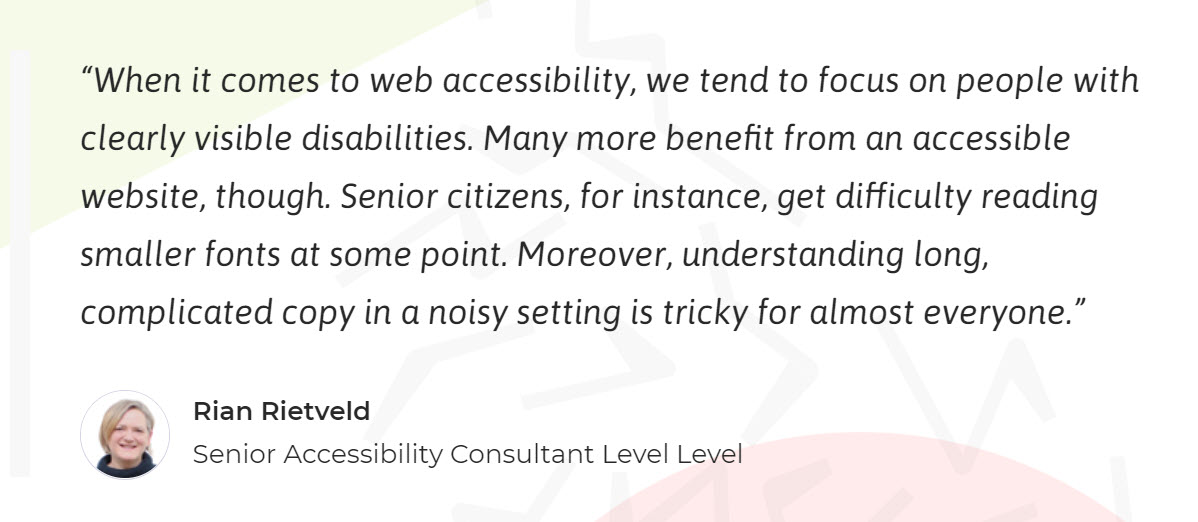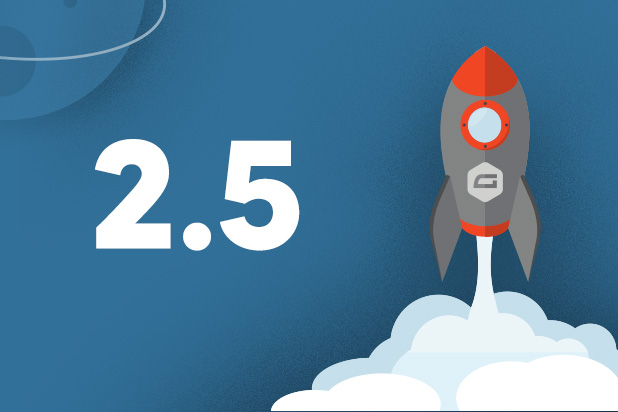Web Accessibility: What Is It and Why Is It Important?
Everyone is talking about accessibility – accessible websites and accessible forms. But other than a general idea of what people are referring to, do you really know what web accessibility is – and crucially, why it is important?
In this article, we cover the main whats, whos, and whys, of accessibility. We explain in detail what accessibility is, who is affected by websites that aren’t accessible, and why your business needs to ensure your forms are fully-accessible to your audience.
Let’s get started…
What is Accessibility?
When defining web accessibility, the World Wide Web Consortium (W3C) has written that “Web accessibility means that websites, tools, and technologies are designed and developed so that people with disabilities can use them”.
However, ‘disability’ doesn’t just refer to people with sight or hearing loss (which is often people’s first thoughts when it comes to web accessibility).
The mission of W3C is to “make the web available to all people, whatever their hardware, software, network infrastructure, native language, culture, geographical location, or physical or mental ability.’
By ensuring all websites are accessible to all, the internet becomes fair and inclusive, allowing everyone access to the content, information, and opportunities that the web provides. As Web accessibility experts Level Level argues that “Everyone benefits from improved web accessibility.”
So what might prevent people from accessing the web? Let’s find out…
Why Might People Have Trouble Accessing the Web?

Over 20% of all people using the web will have issues fully accessing the websites and the content they need.
Accessibility encompasses a broad range of issues that affect access to the web – from disabilities, including temporary disabilities, to situational limitations, and issues with technology or the internet. Let’s take a look…
Disabilities:
- Visual – Blindness and other visual impairments including cataract, glaucoma, and color-blindness can all affect how well users are able to access websites.
- Auditory – There are a diverse range of hearing impairments that can affect web accessibility, from profound deafness to loss of hearing in old age.
- Cognitive – This can involve issues with memory, language, thinking, and judgement, which can all affect web navigation.
- Physical – Mobility and physical impairments can prevent users from easily browsing the web or inputting data.
These are just some of the disabilities that can impact a user’s access to the web. Further web accessibility issues include:
- Temporary Disabilities – Broken bones, lost glasses, tiredness, this list is endless!
- Situational Limitations – Bright sunlight, time restrictions, a situation where you can’t listen to audio, etc.
- Devices – Mobiles, smartwatches, and other devices with small screens or using old technology, as well as assistive technology including screen readers and speech operated software, all alter a user’s web experience.
- Internet – Slow internet, poor connection, or limited bandwidth quickly restricts web accessibility.
Arguments for Improving Web Accessibility
Accessibility is an important issue for many different reasons and on many levels. These include: Ethical, Business, and Legal.
Let’s take a look at each of these in turn…
Ethical
The first, and key argument for accessibility, takes an ethical standpoint.
The World Wide Web Consortium (W3C) is an international community – it’s guiding vision is to ‘lead the Web to its full potential.’ As in the physical world, the W3C is working towards a fair and inclusive web for all, whatever your individual situation or needs.
When the web is fully accessible, barriers that prevent people with disabilities contributing to, or joining in with, the physical world are removed. Full web accessibility also ensures that everyone has the same opportunities and are treated equally online – something that we should all be striving toward!
Business
If the ethical standpoint isn’t enough to win you over on the importance of web accessibility, then the business case for accessibility may help. As mentioned, on average 20% of all people who visit your website will have issues accessing your content – if your site is inaccessible, that is a lot of potential customers that you have missed out on.
Accessible websites also perform better across the board too. By using universal design strategies (strategies that ensure everyone can access your site) your site becomes more user friendly to all, not just those with disabilities.
This will ultimately improve your site’s performance – whether this is communicating messages and information more clearly, streamlining site navigation, collecting leads, or generating revenue.
Legal
Lastly, there is a very strong legal argument for accessibility. If your website isn’t fully accessible then it could be considered discriminatory towards those with disabilities. Depending on your country and state, and where your audience is located, this could leave you open to lawsuits.
You will find that laws on accessible websites differ greatly – for example, Government and public sector websites have to adhere to much stricter accessibility laws than some other industries. However, it is crucial that you research accessibility laws and guidelines in your country and for your business sector to ensure that your site is complying with regulations – and make the necessary changes if not.
Making Your Website More Accessible Right Away
W3C has produced Web Content Accessibility Guidelines (known as WCAG 2.1) which are internationally recognized guidelines for improving web accessibility. These guidelines are extensive, and you may need to work with accessibility professionals to get your website up to scratch.
However, below we share a few top tips to help you make your website more accessible right away…
- Add Alt Text to All Images – Alternative text replaces the image if an image fails to load. However, it is also used by screen readers to help users ‘read’ the image. Therefore, when filling out the Alt text, make sure it clearly describes the graphic.
- Give Links Unique and Descriptive Names – Links should always be underlined and given a meaningful name so screen readers can easily identify the links within the content.
- Provide Captions for Videos and Transcripts for Audio – Captions, transcripts, and other text alternatives for video and audio on your site will ensure that users with visual and auditory impairments can still access the content.
- Choose Colors Carefully – Make sure the colors on your site contrast well so it is possible for everyone to distinguish between different content elements on your page. It is also important not to use color alone to convey information. For example, a form that uses color to identify a required field should also use some other kind of indicator – ie, an asterisk – so all users can see which fields are required for form submission.
- Use Tables for Tabular Data, Not for Layout – Tables used for layout purposes can cause confusion for visitors using screen readers. Limit table use to data only, and follow these W3C Table Guidelines.
- Use an Accessible Form Builder – It is essential that the forms on your website are accessible to all your visitors, enabling users to get in contact, sign up to a service, purchase products, and any other action that includes entering their data and submitting a form. Using a form builder that has the functionality to allow you to create accessible forms is a must for all websites.
To find out more about making your website accessible, check out W3C’s Easy Checks. This will help you audit your website and give you a good starting point for the necessary improvements you will need to make.
Gravity Forms and Accessibility

Gravity Forms is fully committed to accessibility and making the web accessible to everyone. This commitment is reflected in the latest release of Gravity Forms 2.5, which has seen our development team working with accessibility specialist, Rian Rietveld, and the team at Level Level, to solidify our position as the most accessible form builder on the market.
With Gravity Forms 2.5, you will find accessibility changes across the board, turning our form builder into an accessibility tool that can be used to create forms that achieve WCAG 2.1 AA compliance. For more information on what this update means for Gravity Forms and our community, check out our 2.5 Guide.
2.5 is currently available to all new and existing customers – for everyone with an active Gravity Forms license, 2.5 can now be downloaded from within your Gravity Forms account dashboard.
Equally, our free 2.5 demo is available to everyone, and has been designed to give users the full 2.5 experience so you can try before you buy!
Make sure you sign up to our 2.5 mailing list to keep up-to-date with all things 2.5…
